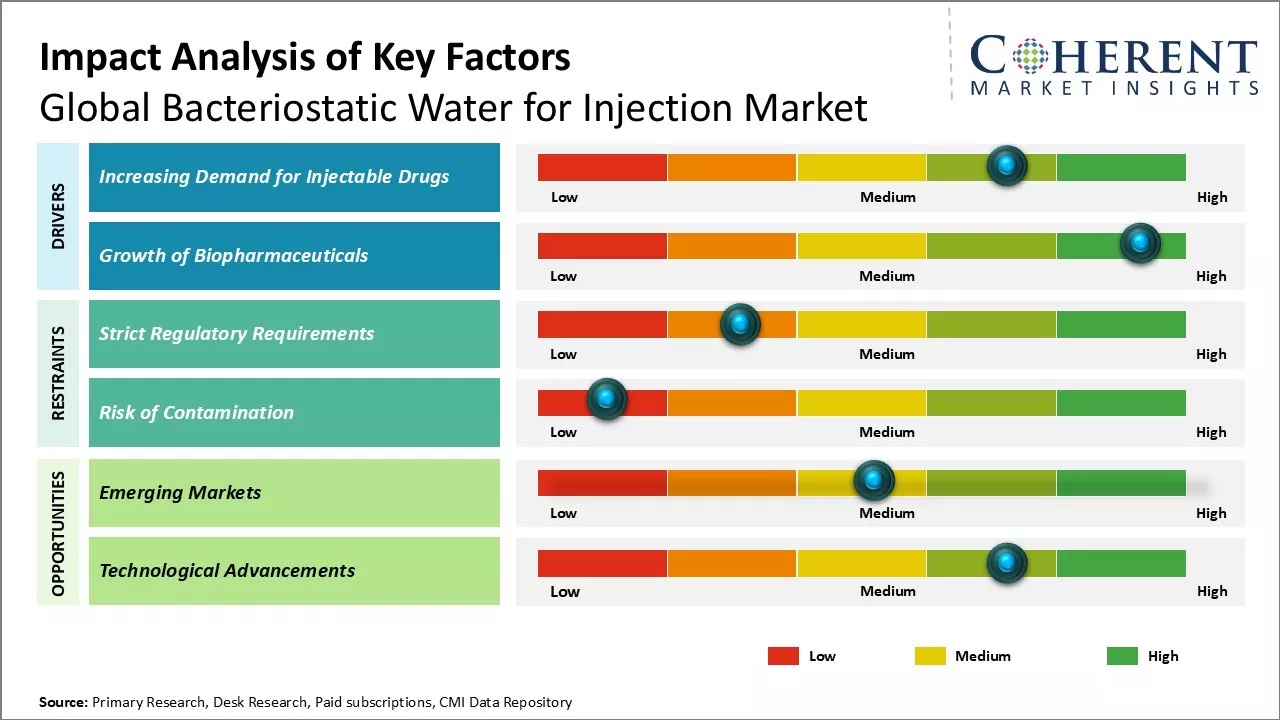Global bacteriostatic water for injection market is estimated to be valued at USD 1.32 Billion in 2025 and is expected to reach USD 2.29 Billion by 2032, exhibiting a compound annual growth rate (CAGR) of 8% from 2025 to 2032. Global bacteriostatic water for injection growth is driven by factors like rising prevalence of chronic diseases and increasing number of surgeries being performed.

To learn more about this report, Request sample copy
Market Driver - Increasing demand for injectable drugs
Rising demand for injectable drugs due to their rapid absorption and onset of action can drive the market growth. Administering drugs intravenously allows for direct introduction into the bloodstream, thus, bypassing the hepatic first-pass metabolic process that helps in attaining higher bioavailability.
Rising one-time dosage medications, which are very convenient for patients opposed to oral treatments requiring multiple daily pills, also boosts preference for injectable drugs. Self-injectable devices have become very sophisticated, thus, allowing for convenient home administration without requiring frequent hospital or clinic visits. This has especially benefited chronic disease patients in need of long-term management. Geriatric population prone to various co-morbidities boosts demand for injectable drugs to counter poor absorption related to aging physiology and difficulties in swallowing large oral pills.
Increasing complexity of drug molecules and monoclonal antibodies has raised safety concerns about toxic contaminants if administered orally. Sterile packaging and filling of injectable drugs ensures exclusion of pyrogens, microbial contaminants and other impurities. This makes injections the only viable option for these advanced medications, which are being developed intensively for severe diseases. The injectable route of delivery also allows inclusion of controlled release formulations through depot injections to achieve steadier drug levels over weeks or months with less frequent dosing. For instance, in May 2022, the U.S. Food and Drug Administration granted approval to Eli Lilly for Mounjaro (tirzepatide) injection, a novel once-weekly treatment that functions as a GIP (glucose-dependent insulinotropic polypeptide) and GLP-1 (glucagon-like peptide-1) receptor agonist. This medication is designed to enhance glycemic control in adults diagnosed with type 2 diabetes.
Joining thousands of companies around the world committed to making the Excellent Business Solutions.
View All Our Clients